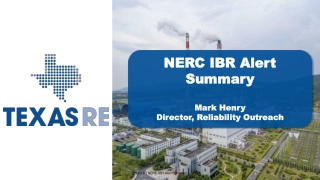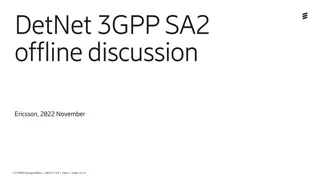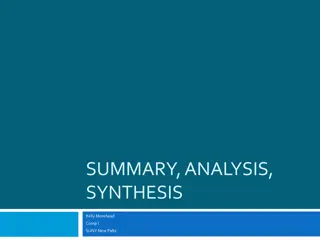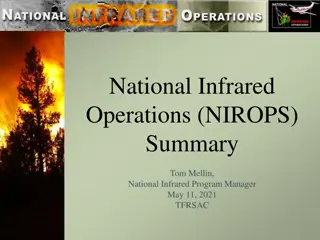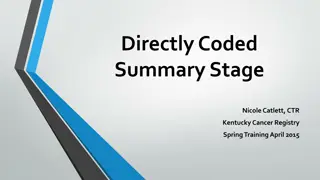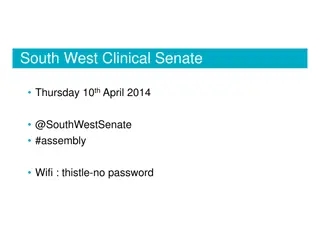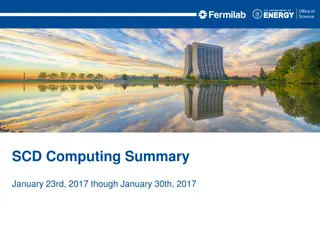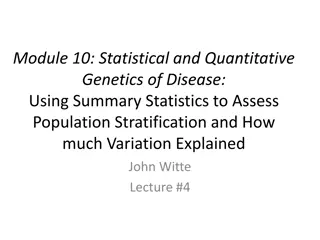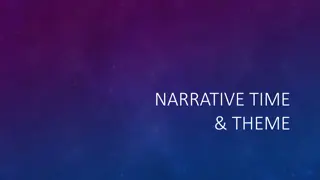Course Overview: Extracting Value from Data Analytics
This course focused on extracting value from data analytics, with an emphasis on reading, comprehension, critical thinking, research, and presentation skills. It aimed to optimize accuracy, power, speed, ease of use, and cost in data analysis. Various topics covered included dealing with unstructured data, scalable analytics, visual analytics, new interfaces, data science, ML, and collaborative query processing. The course also explored crowd-powered algorithms, systems, and new forms of data, providing insights into handling more data effectively and efficiently.
Uploaded on Dec 10, 2024 | 0 Views
Download Presentation

Please find below an Image/Link to download the presentation.
The content on the website is provided AS IS for your information and personal use only. It may not be sold, licensed, or shared on other websites without obtaining consent from the author.If you encounter any issues during the download, it is possible that the publisher has removed the file from their server.
You are allowed to download the files provided on this website for personal or commercial use, subject to the condition that they are used lawfully. All files are the property of their respective owners.
The content on the website is provided AS IS for your information and personal use only. It may not be sold, licensed, or shared on other websites without obtaining consent from the author.
E N D
Presentation Transcript
Ingredients Data Analytics Analyzing & extracting value from data Humans As analysts extracting value As workers helping the analysis
Course Objectives Reading and Comprehension Skills You read ~25 papers Critical Thinking and Discussion Skills Active engaging in critically analyzing papers flaws and insights Research Skills Semester-long meaty project Presentation Skills Present the key ideas of a database style paper
Optimization Objectives Accuracy Better, more complete results Power Enabler of more interesting analyses Speed Want results quickly Ease of use For both novice and expert users Cost Crowds, resources
Topics Covered A. Dealing with Unstructured/Noisy Data 1) Crowd-Powered Algorithms 2) Crowd-Powered Systems B. Dealing with More Data 1) Scalable Data Analytics 2) Approximate Data Analytics C. Dealing with Novice Analysts 1) Visual Analytics Systems 2) New Interfaces & Usability D. Dealing with New Scenarios 1) Data Science, ML, and Graph Processing 2) Collaborative Query Processing For each, we covered a A) system or an algorithm + B) connections to other (sometimes old) database topics
Topics Covered A. New forms of data 1) Crowd-Powered Algorithms a. CrowdScreen: Filtering data with humans: cost/latency/accuracy; probabilistic reasoning b. So Who Won: Max Graph-based maximum-likelihood reasoning c. Sorts and Joins: Sorting and joins with humans New types of interfaces (hybrid), batching 2) Crowd-Powered Systems a. CrowdDB: DB + Crowds Data model (CNULL), query constructs, query processing b. Deco: DB + Crowds A more complete language
Topics Covered B. Dealing with more data 1) Scalable Data Analytics a. Dremel: Google s parallel column-store system distributed query processing, column stores b. SparkSQL: DB layer on Spark Translation from SQL to Spark queries, ..
Topics Covered B. Dealing with more data 2) Approximate Analytics: tradeoff between c/l/a a. BlinkDB: Approximate Query Answering System stratified samples help! Query column sets b. Sample+Seek Importance-biased sampling can help
Topics Covered C. Dealing with novice analysts 1) Visual Analytics Systems a. Trust me, I m partially right: approximate vis online aggregation b. I ve seen enough ideas of incremental visualization c. Immens in-situ data cube plus brushing and linking d. Polaris: Basis for tableau Idea of a data cube, visualizations = cube aggregates! e. Zenvisage: visual data exploration scalable grouped query execution techniques
Topics Covered C. Dealing with novice analysts 2) New Interfaces and Usability a. DBTouch touch-based querying of data: pinch+zoom b. Gestural Query Specification completeness of operators; user study! c. Making Database Systems Usable natural language interface types: forms, keyword search, QBE d. DataPlay building on visual query builders with feedback e. DataSpread spreadsheets+databases
Topics Covered D. Dealing with new settings 1) Machine Learning and Graph Processing a. MLBase: Wrapper on ML algorithms parameter tuning for ML is a pain b. Laura Haas s lecture Data Science as a Service c. MADSkills: Wrapper on traditional database kinds of ML-based analyses of interest d. Graphlab: Distributed Graph Analytics tools graph analytics systems, thinking like a vertex
Topics Covered D. Dealing with new settings 2) Collaborative Analyses a. Orpheus: data collaboration collaboration as a versioning problem
Historical Takeaways Examples: Storage layer: column stores, data compression, data sampling Processing layer: noSQL, adaptive QP, parallel QP c-l-a tradeoff in crowdsourcing, interfaces, batching Usability layer: forms, keyword search, QBE data integration, data cleaning Visualization layer: binning, aggregation, data cubes, online aggregation Applications layer: graph processing machine learning primitives
Mix of Papers: Vision vs. Details Visionary, examples Database usability DBTouch/GestureDB MLBase Detail-Oriented, examples CrowdScreen GraphLab Dremel, SparkSQL
Mix of Papers: Algorithmic vs. Systems Algorithmic: probably 30-35% Systems-oriented: the majority Not surprising given that this is a database systems course .
(Hopefully) Lessons Learned Don t solve non-problems! Importance of thinking about users Interface Language careful systems architecture Generalizable Efficient / Powerful Tailored to use-cases Data analytics involves: Usability Careful, Scalable system architecture (Systems) Principled algorithms design (Algorithms)


